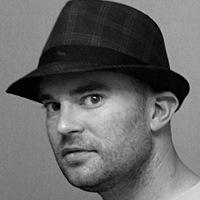Blog
Unless otherwise stated, content is shared under CC-BY-NC Licence
Landing on the moon
Lizzie Richmond works at the University of Bath
It has been 2 years since our last blog. We would like to be able to report giant leaps in digital preservation at the University of Bath, but the truth is there haven’t been any. That doesn’t mean there hasn’t been progress; there has. It’s just that sometimes it can feel like the small steps aren’t really moving you forward.
I saw the film ‘First Man’ recently and it reminded me (again) just how mind-blowingly amazing it is that the 1969 moon landing ever happened. So much innovation, ingenuity, perseverance and pure blind faith to arrive some place no one had ever been. So many failures, trips back to the drawing board, recalibrations and adjustments.
iPres 2019 New Horizons Panel - Sustaining Digital Preservation in the Nuclear Field
Jaana Pinnick is Research Data & Digital Preservation Manager at the British Geological Survey and attended iPRES2019 with support from the DPC's Leadership Programme which is generously funded by DPC Supporters.
The full title of this New Horizons panel was 'Achieving criticality of preservation knowledge: sustaining digital preservation in the nuclear field'. Working at the British Geological Survey and its National Geoscience Data Centre to preserve earth and geoscience data, this session was a must for me! The purpose of the panel was to provide exchange of ideas for the digital preservation community at large to share thoughts and experiences on preserving records in the nuclear sector. The classified nature of its information makes it difficult to exchange data with the wider community.
I was glad to hear my fellow DPC scholarship winner Elizabeth Kata from the International Atomic Energy Agency (IAEA) and Jim Moye from J&A Preservation talk about the particular issues in very long-term preservation, but I was disappointed to hear that Jenny Mitcham from DPC was unable to join them. However, William Kilbride did his best Jenny Mitcham impression which was much appreciated by the audience!
My armchair iPRES highlights
Digital preservationists flocked to Amsterdam in huge numbers this week to attend iPRES 2019 - an international opportunity for conversations about all things digital preservation!
I was disappointed to have to cancel my own plans to attend the conference at the last minute, but undeterred, decided to engage as much as I could remotely (mostly from the comfort of my dining room...not actually an armchair). I could not miss out on potentially hearing about new theories, models, standards and examples of good practice in digital preservation.
It was great to have access to the programme and all of the papers, panel and poster abstracts online from the iPRES2019 programme and of course to be able to follow the prolific tweeting on #ipres2019. I tried to read the conference papers ahead of time, which gave context to the deluge of tweets.
So this is not your typical conference round up (no pictures of interesting sights and local food!) but I’ve instead tried to pick out some of the papers that were of particular interest to me, and to encourage you (whether you were there or not) to dive in and have a look.
Introducing the DPC RAM
“If you can’t measure it, you can’t control it.”
Martin Robb, National Programme Manager, NDA
I’ve heard this phrase several times since starting work on a digital preservation project with the Nuclear Decommissioning Authority here in the UK. Colleagues at the NDA were very keen that as part of our two year project with them, we found an appropropriate way of measuring where they are now in their digital preservation journey and establishing a clear direction of travel.
Maturity modelling was the obvious answer.
As mentioned in a previous blog post we didn’t want to re-invent the wheel, so we did some research, looking at digital preservation maturity models that were available, hoping to find one that was suitable to use in the context of the NDA.
Integrated Preservation Suite (IPS): a scalable preservation planning toolset for diverse digital collections
Peter May is the British Library’s Digital Preservation Technical Architect
Preservation planning is a long established function in digital preservation. Its purpose is to ensure that digital content can move forwards through time for future users without suffering unacceptable loss, either to intellectual content or functionality. Many different activities support preservation planning, and at the British Library this has included collection profiling, format sustainability assessments, defining digital preservation policy, content sampling, and preservation risk modelling. These activities have led to an excellent understanding of what is needed to preserve our digital content and the risks that are likely to manifest.
Missing from this picture, however, was the ability for us to put this knowledge into practice in an automated manner so that technical risks can be effectively and efficiently mitigated, at scale, and across all the collections. Our approach, formalised in our Integrated Preservation Suite (IPS) project, is our developing solution to this challenge.
How to correctly identify the file type of a text file from its contents?
Dr Santhilata Kuppili Venkata is Digital Preservation Specialist / Researcher at The National Archives, UK
The Plain text file format identification is of interest for in the digital preservation area. At The National Archives (TNA), we have initiated the research to identify text file formats as the main topic. We carry on the research for the question: 'How to correctly identify the file type of a text file from its contents?'
Motivation to start this research and the dataset used for this purpose are discussed in part 1 published earlier. We present the methodology to the text file format identification as a classification problem in this part. As of now, we consider the classification of five formats - two programming source codes (Python and Java), two data file types (.csv and .tsv) and one text file type (.txt).
Methodology - ML to the rescue
Artificial Intelligence (AI) and Machine learning (ML) have become an integrated part of our lives. Machine learning is a set of generic algorithms that can understand and extract patterns from data and predict the outcome. TNA deals with a huge variety of file types for digital archiving. Hence an iterative process model is appropriate to include file types gradually. The methodology should be flexible enough to apply to more file types progressively. As and when a new file type is to be included, its features (specific characteristics) should be compared against the existing features and engineered to add to the list. Hyperparameters for the models should be adjusted accordingly to get a better performance. The flow graph in Figure 1 shows the methodology developed.
Curation and Preservation: Teaching, Practice and Inquiry
Kristen Schuster is Lecturer in Digital Curation at Kings College London
I had a rather interesting conversation with a colleague a few months back. It started with the simple question: what exactly do you do? Usually this sort of inquiry is a conversation stopper, but with this particular colleague, it was a genuine inquiry meant to start a conversation. It helped that we were sitting in a room full of undergraduate students visiting from the States who had only a vague inkling (at best) about the Digital Humanities.
They were in for a bit of a disappointment though, because I am not a digital humanist. I’m a librarian who works within the digital humanities. And I have a rather fantastic, if slightly cryptic, job title: Lecturer in Digital Curation.
Motivation to Undertake File Format Identification Research for Plain Text Files
Dr Santhilata Kuppili Venkata is Digital Preservation Specialist / Researcher at The National Archives, UK
The file format identification problem has been of interest for quite some time in the areas of digital archiving and digital forensics. Many researchers are working to find a solution to this problem. While most of the work is done to identify files with binary file formats, not much work is found to identify the file type of plain text files. In this digital era, files are often generated in an integrated development environment where each document generated is supported by multiple files. These include programming source code, data description files (such as XML), configuration files etc. For digital preservation, it is important to understand each of these supporting files correctly.
Contents of the supporting files are often human-readable. i.e they can be opened as plain text files using a simple text editor. But if the file extensions are missed or corrupted, it is hard to know how to put that file to use!!
Some of the existing research work used Natural Language Processing (NLP) techniques such as pattern matching of n-gram contiguous sequence models. Even though these techniques needs the program to be written in a specific style only. They fail to differentiate files when the target file types have almost similar structures (for example, Java and C). We need to generate file features and classification models in such a way that they describe file types distinctly. To address this problem, we kick started the research project: 'Text File Format Identification' at The National Archives (TNA). Our initial prototype makes use of machine learning algorithms and can identify five formats: Python, Java, .txt, .csv, .tsv.
Ten things I've learned about using OAIS from a sprawling twitter convo
Throughout the last couple of days I've blundered about the twitterspace, having a multidimensional debate about OAIS, prompted in the first instance by this tweet:
HEY I KNOW YOU’VE ALL BEEN WAITING for the latest thing I hate about OAIS, so here it is:
— Ondatra iSchoolicus (@LibSkrat) August 27, 2019
OAIS's “designated community” concept strongly implies that the only communities of interest to preservationists are those who should understand the data.
I've done some ranting, I've got the wrong end of the stick, I've discussed stuff, I've got completely confused, I've had a few chuckles and now and again I've even managed to say something remotely useful. I've also done quite a bit of reflection on what's been said and I reckon I've learned a lot. I wanted to attempt to write up a summary of what I've learned, and as it's Friday afternoon I've aimed for something reasonably light hearted. So here's ten things I've learnt about using OAIS from a sprawling twitter convo:
File format identification: A student project at the University of Sheffield Library
This blog has been written by Peter Vickers; a postgraduate student in Speech and Language Processing hired by the University Library, as part of the University of Sheffield’s OnCampus programme, to look into file identification and archiving.
Forgotten Scripts
Below is an inscription written in Linear A, a Minoan script which has been found on thousands of historical objects across Greece. Because the language bears no close similarity to a language we understand, and we have no Rosetta Stone to decipher the language, linguists have had to use speculation and comparison to attempt to decode the script. Whilst over the past decades, Linear A has been related to the proto-Greek Linear B, the Hittitie Luwian script, Phonecian, and Indo-Iranian, none of these comparisons have either achieved widespread academic acceptance or allowed for the translation of much of the Linear A corpus. For now, at least, Linear A, and all of the Debts, Curses, Tax Returns it encodes are indecipherable.
Given our cultural interest in lost languages and the knowledge they might encode, I wonder what researchers in 100 years will make of all the digital content we create. Linear A is 3,500 years old – old enough to be forgiven for having been forgotten. Meanwhile, last week I found myself unable to access the data on a five inch floppy disk, which were still in use twenty years ago. Of course, the loss is not the same – I could use the library’s archival system to read the disc. However, the data on the disc might itself be in an obsolete file format. Comparing it to the Linear A problem : recovering the data might be compared to the legibility of our script, whilst opening might be compared files it to our ability to translate it.

















































































































































